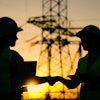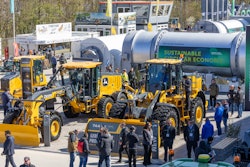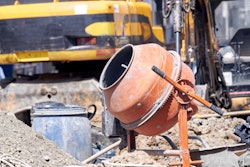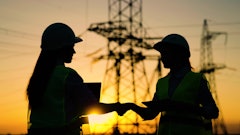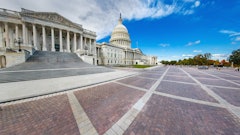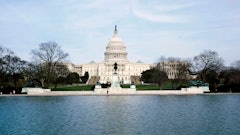
Since returning to office, President Donald Trump has wasted no time, releasing dozens of Executive Orders (EOs) on his first day back in the White House on January 20th, 2025.
Various EOs are relevant to the propane industry. As global economics is a key market condition that will influence changes in the price of products like propane, commercial propane supplier DCC Propane, LLC, has analyzed the initial reaction to the announcements:
Which Executive Orders Impact the Propane Industry?
Of all the EOs released by President Trump, those that will grab the attention of businesses tied to the propane industry and their consumers include actions to:
- Adjust the tariffs that affect the energy sector to increase the competitiveness seen within both domestic and international markets.
- Declare an energy emergency in which high energy prices have been put under the spotlight.
- Increase and streamline energy infrastructure and production domestically by simplifying permitting processes and reducing regulatory barriers.
- Promote energy choice and appliance neutrality by introducing policies that aim to prevent favoritism toward a single energy source or appliance to create a level playing field in the market.
- Reallocate federal grants that were previously only focused on electric vehicles to create more opportunities for the research and development of alternative energy initiatives.
How Executive Orders Could Positively Affect the Propane Market
Another EO to note is President Trump's signing establishing the National Energy Dominance Council. A fact sheet on the official White House site details how this move can be positive for the USA.
Detailed as a means for “positioning American energy for the next century,” this EO looks to develop American energy resources in a way that will allow the nation to rely less on foreign entities.
According to another section of the fact sheet, American energy dominance is the most reliable way to ensure the stability and affordability of American energy prices.
Recent history should provide some comfort for how President Trump can empower energy production in the USA. After all, during President Trump’s initial term in the White House, the country became a net exporter of energy for the first time in almost 70 years.
President Trump’s first term saw millions of acres of land across the USA opened for the development of domestic energy, many new energy jobs created throughout the nation, and American families saving $2,500 on average per year on their gas and utility costs.
Speaking recently at the CERAWeek by S&P Global conference, Interior Secretary Doug Burgum acknowledged that the USA’s abundant natural resources significantly outweigh the $36 trillion that the nation is in debt.
Mr. Burgum went on to claim that the country’s 10-year long-term interest rate would decrease if financial markets were given the opportunity to understand the value of the USA’s natural resources. He pointed out: “The interest rates right now are one of the most significant expenses we have as a country.
“So, one of the things that we have to do is unleash America’s balance sheet, and President Trump is helping us do that.”
Concerns in the propane industry about the EOs
There are some trepidations surrounding the introduction of these EOs though.
The National Propane Gas Association (NPGA), which is going to be working to make sure the EOs are implemented throughout each sector that the organization works in on behalf of the propane industry, had a pair of primary concerns.
As outlined by NPGA’s President and CEO Steve Kaminski and reported on by LP Gas Magazine, one of these concerns is the tariffs which will be placed on equipment and parts that arrive in the USA from across the globe to then be used by businesses in the propane industry.
“Steel tanks and cylinders manufactured outside of the United States and sold into the United States will get slapped with this 25 percent tariff. This is impacting a number of manufacturer members.”
Another concern of the NPGA is going to be the tariffs on propane that is coming into the USA from Canada. This is because the association lists annual cross-border propane sales from Canada into the USA to amount to $1.9 billion, but a ten percent tariff will work out at $190 million per year.
President Trump's increase in tariffs on goods from China to 125 percent and Beijing's imposing tariffs of 84 percent on US imports at the start of April have also led to speculation about how these moves may impact the US propane industry.
As reported on by Reuters, industry insiders have commented that Chinese petrochemical makers, which currently purchase $11 billion of US propane per year, look set to reduce output or shut for maintenance in the very near future because of tariffs on US imports driving up costs.
NPGA stated that it will monitor how President Trump and his administration approach tariffs.
“This is one of our top priorities, but we also have a massive opportunity with this new administration, with the new appointees to the Department of Energy, Department of Transportation and EPA, which are all pro-energy choice, and with the new Congress,” Kaminski added. “We have as good of an opportunity over the next several months as we’ve had in a long time to position propane very well in the future.”
Next steps for businesses and consumers
As propane has become one of the talking points following the announcement of President Trump’s EOs, Chris Daly, COO at DCC Propane, LLC, believes that businesses and consumers should investigate the benefits of using this gas without delay. Daly made comments advising the masses.
“Start by evaluating your energy needs. Switching to propane can assist with many business operations and provide heating solutions around facilities. Getting in touch with a propane supplier will also help you understand the cost-saving options of switching or expanding the use of propane,” Daly suggested. “As domestic energy infrastructure and production is set to increase and be streamlined through President Trump’s EOs, make sure you are keeping up to date about any legislative changes and incentives that could be introduced across the nation which will affect the price and availability of propane.”
